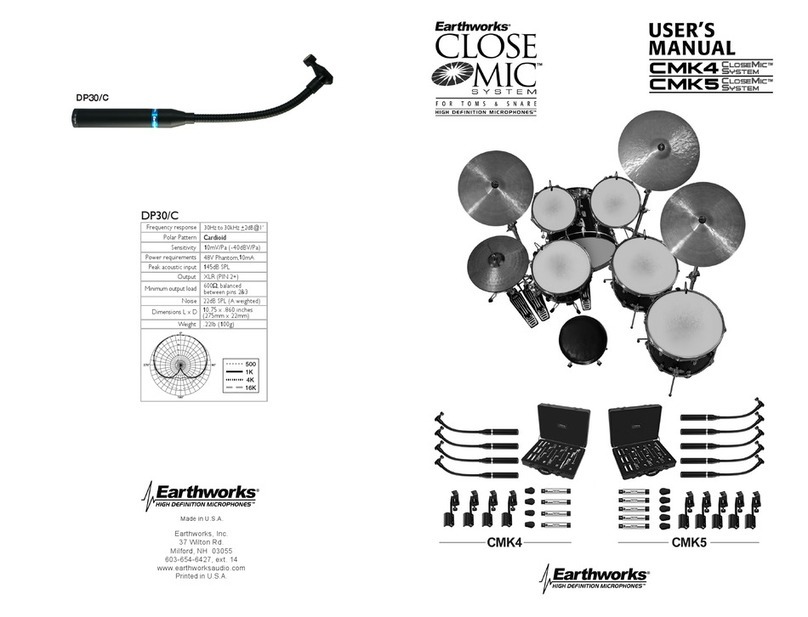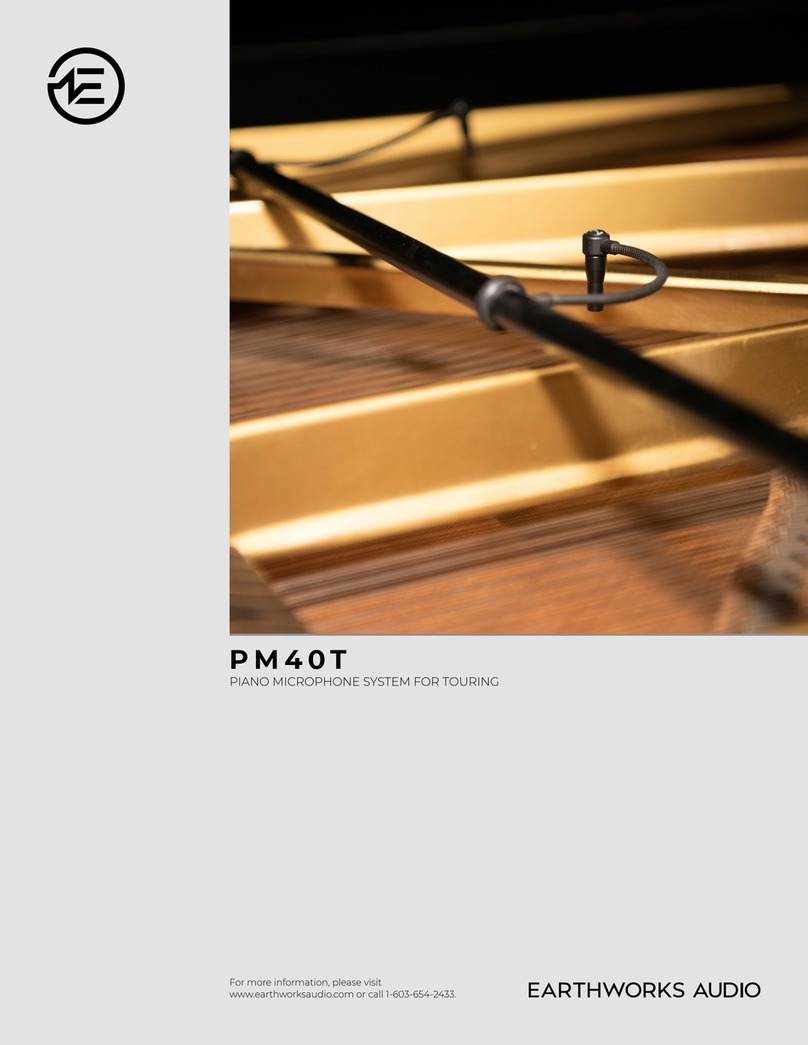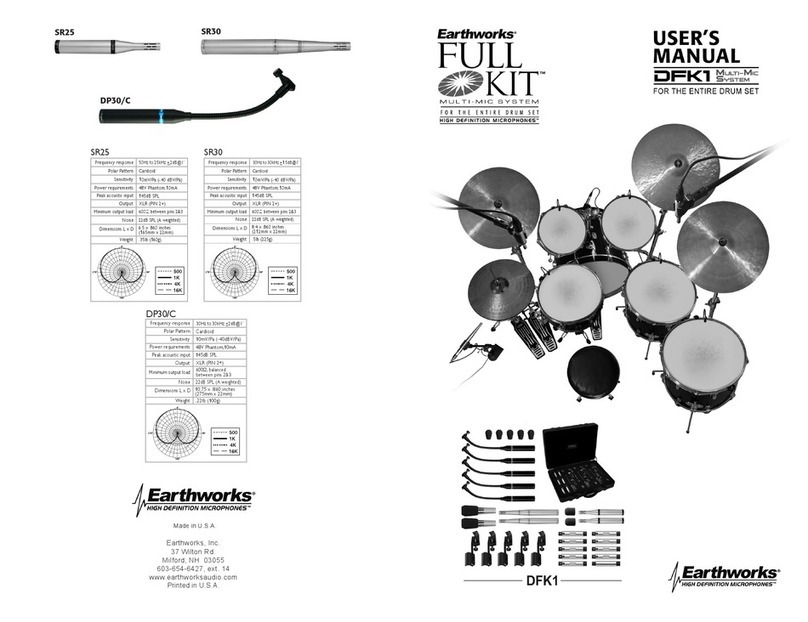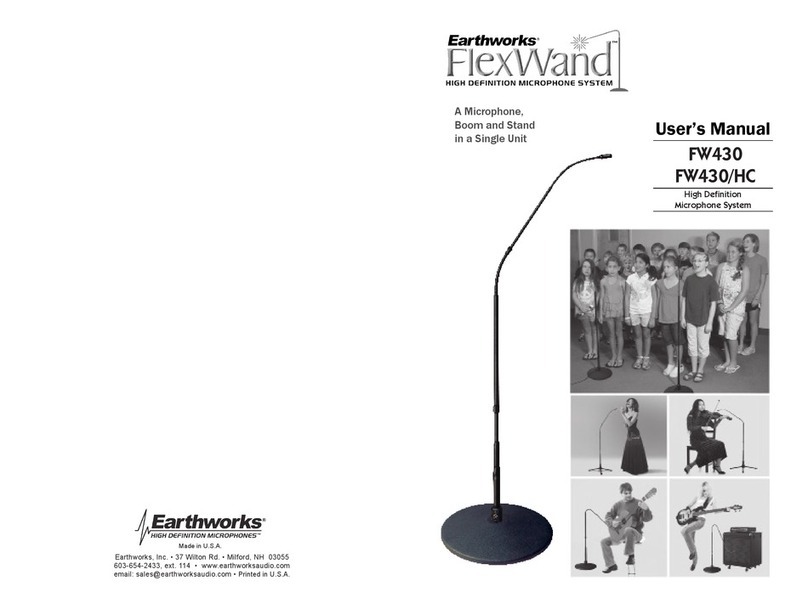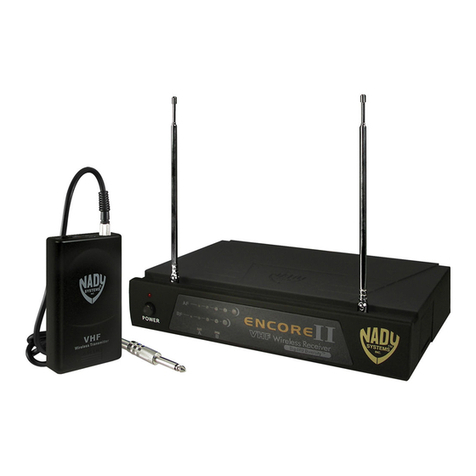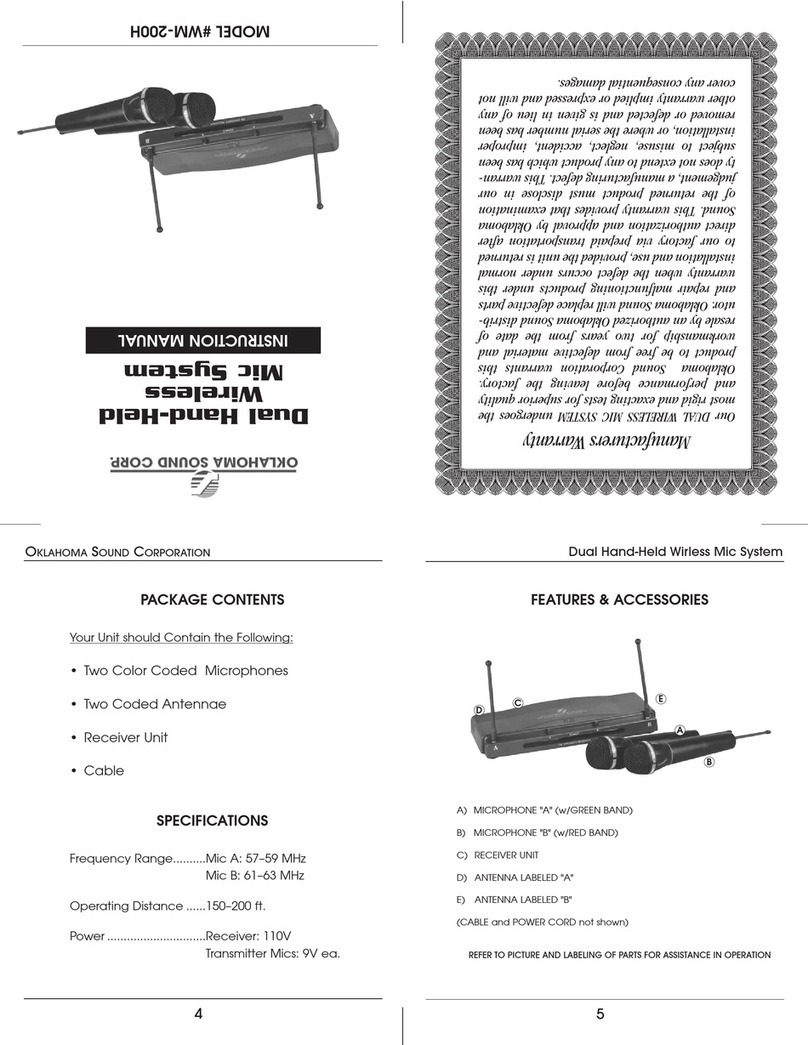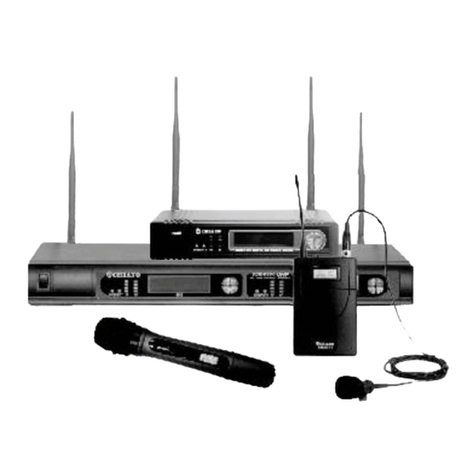of impulse response, diaphragm settling time and polar technologies. Those
who have heard Earthworks High Definition Microphones™, say that they
hear more of attack, more subtle details and a more pristine quality in the
sound than with any other microphones, regardless of price. The Demo CD in
the Earthworks Mini-Brochure should capture your interest in this respect.
A Mini-Brochure with a Demo CD is included with this manual. Even though
you have purchased Drum Periscope microphones, we suggest that you take
the time to listen to the other High Definition Microphones demonstrated on
this enclosed Demo CD.
Miking Drums
There are many ways to mic drums and it seems that most every recording or
live sound engineer has their own way of doing so. Our objective is not to in-
dicate which drum miking approach is better, but to make suggestions and look
at advantages and disadvantages of each. Every engineer or producer uses their
own methods to obtain the results they desire, and that’s what matters.
Multi-microphone Method
The objective in multi-microphone drum miking is to place a separate mi-
crophone on either most or all the elements of a drum set. Typically, sepa-
rate mics are used on snare, toms, high-hat and kick drum with one or two
overhead microphones. The overhead mics pick up the overall sound of the
drums including cymbals, which are typically not miked separately. With
this method, the mixing engineer can control the level, and signal process-
ing (limiting, EQ, etc.) for each element of the drum set (toms, snare, hi-hat,
etc.). This provides a great deal of control over the sound of the entire drum
set and allows bringing out certain patterns on sock cymbal, snare, etc. Multi-
miked drums may be desirable when you are recording in a large room with
high ambient sound as it will reduce the amount of unwanted room sound.
Multi-miking is also a popular practice for miking drums in “live sound” ap-
plications such as concerts, as it will provide more gain before feedback in
addition to greater control of the drum mix.
No Phase Cancellation Issues
with Earthworks™Microphones
One of the typical disadvantages in the multi-microphone approach, when
using conventional microphones, is the interactive microphone phasing prob-
lems that result in the cancellation of certain frequencies. These phasing
problems are a result of the poor polar response of conventional microphones.
Conventional microphones have a drastically different frequency response
between the front and sides of the microphone. It is common for conventional
6
